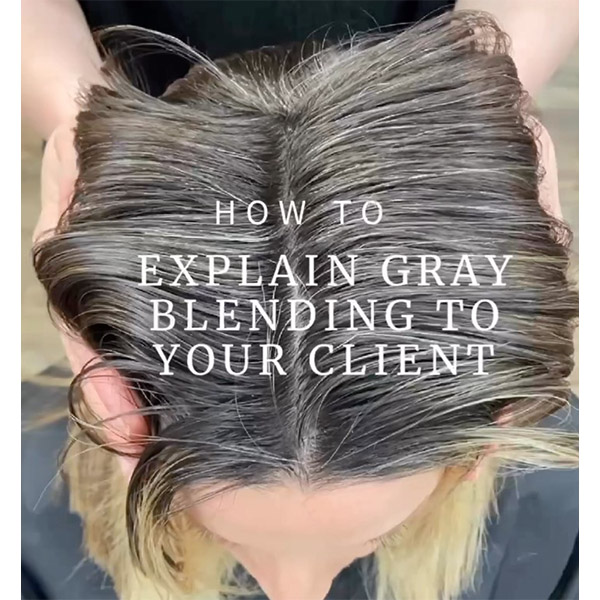Guide To Gray: 5 Tips To Blend or Cover Stubborn Grays
Photo Credit: Instagram via @adriennedara
Gray Coverage vs. Gray Blending: Read This Fast Guide We all learned about gray coverage in cos school, but it’s not a one-formula-fits-all service. It’s time to stop treating all grays the same and customize our approach for each client. Below, learn the ideal client for a gray blending or gray coverage technique, how to avoid banding, application tips for better coverage and formulas to save for the salon. 1. Gray Coverage Versus Gray Blending: The Ideal Client To gray blend or gray cover—deciding which service is best is usually obvious, but BTC Team Member Melissa Maloney (@live_love_dohair)...
More from
Redken
-
Blonde
Glossy, Dark Teddy Blonde
-
Blonde
Low-Maintenance, Soft Blonde Curls
-
Clarifying
Why Does My Hair Hurt When It’s Dirty? Doctors Weigh In
-
Beachwaves
How To Wear the “Olsen Dip” Hair Trend Like It’s 2005 Again
-
Celebrity
Prom Hairstyle Inspiration for Every Hair Type
-
Balayage
How To Create Custom Brondes With Toning & Glossing
-
BTC Hair Trend Report
The Most Popular Shades EQ™ Formulas For 2025
-
Blowouts
Classic Blowouts are Back: Your Go-To Guide for the Polished Look
-
Black Shampoo
The 10 Best Toning Shampoos for Blondes, Brunettes & Reds
-
Brunette
2025’s Biggest Hair Color Trends
-
New Appointments
Redken Education Team Welcomes Two New Roles
-
Accessories
NYFW Hair Trend: Maximalism is Back
-
Postpartum Hair Loss Hits Hard—Here’s How to Handle It
-
Celebrity
Sabrina Carpenter’s Hair: How to Get Her Curtain Bangs
-
Bobs
What is “The Charlotte”? A Look at 2025’s Romantic One-Length Haircut
-
Celebrity
Sza’s Super Bowl Look: Get Her Cherry Vinyl Curls
-
BTC Hair Trend Report
Trending Haircuts: The Hime is Everywhere Right Now
-
Celebrity
How To Get Sabrina Carpenter’s Grammys Hair
-
Haircare
Redken Control Hairspray
-
Haircare
Redken Root Lifter Volumizing Spray
-
Haircare
Redken Stay High Mousse
-
Haircare
Redken Quick Blowout
-
Celebrity
Grammys 2025: The Best Celebrity Beauty Looks
-
Monthly Product Launch List
11 New Hair Launches to Kick Off 2025







 or
or






